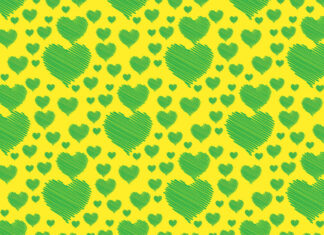In the enchanting realm of the Wizarding World, there exists a sport unlike any other, a sport that combines the thrill of flying, the precision of teamwork, and the pursuit of victory high above the ground – Quidditch. From the very first pages of J.K. Rowling’s “Harry Potter and the Philosopher’s Stone,” readers were introduced to this mesmerizing game that has captured the hearts and imaginations of fans around the world. In this comprehensive exploration, we take flight into the world of Quidditch, delving into its history, rules, and the unparalleled magic that makes it a beloved and iconic part of the Wizarding World.
Quidditch is a sport of immense complexity and beauty, a testament to the creativity and imagination of its creator, J.K. Rowling. At its core, Quidditch is played on broomsticks, where seven players from each team take to the skies in pursuit of victory. The game is played with four balls: the Quaffle, the Bludgers, and the Golden Snitch. Each element of Quidditch plays a crucial role in the sport’s dynamic and thrilling nature.
The Quaffle, a red ball about the size of a soccer ball, is the primary scoring ball in Quidditch. The objective is simple: throw the Quaffle through one of the opposing team’s three goal hoops to score points. Each goal is worth ten points, and the team with the most points at the end of the game wins. The Quaffle is passed, thrown, and maneuvered through the air by the Chasers, who are responsible for scoring goals and creating offensive opportunities for their team.
In contrast to the Quaffle’s straightforward scoring, the Bludgers add an element of chaos and danger to Quidditch. These enchanted black balls, each with a mind of its own, zoom around the pitch trying to knock players off their brooms. The two Beaters on each team are tasked with protecting their teammates from Bludger attacks and occasionally redirecting the Bludgers toward the opposing team’s players. The Bludgers create a dynamic and fast-paced game, where players must be both skilled and agile to avoid being struck.
The Golden Snitch, perhaps the most iconic element of Quidditch, is a small, golden ball with wings. It is a game-changing element, worth a whopping 150 points. The Seeker’s sole job is to capture the Golden Snitch, and doing so often secures victory for their team. However, capturing the Snitch is no easy feat; it is incredibly fast and elusive, often leading to thrilling chases high above the pitch.
While the scoring and gameplay mechanics of Quidditch are integral to its excitement, the sport’s true magic lies in the spectacle and the sense of wonder it invokes. Quidditch is played on a massive oval pitch, with three goal hoops at each end. Spectators fill the stands, and the atmosphere is electric. The sight of players soaring through the air, executing daring maneuvers, and engaging in aerial battles is nothing short of breathtaking.
One cannot discuss Quidditch without mentioning the critical roles played by each team member. The Keeper guards the goal hoops, attempting to block incoming Quaffles and protect their team’s score. The Chasers work tirelessly to pass the Quaffle, create scoring opportunities, and outmaneuver the opposing team’s defenses. The Beaters are the protectors, using their bats to defend their teammates from Bludger attacks while also directing Bludgers toward the opposing team. Finally, the Seeker’s quest to capture the Golden Snitch is the stuff of legends, as it requires unparalleled skill and bravery.
The history of Quidditch is a rich tapestry woven with tales of legendary players, memorable matches, and the evolution of the sport over the centuries. From the invention of the Golden Snitch by Bowman Wright in the 13th century to the formation of national Quidditch teams and international competitions, the sport has a storied past. Quidditch has not only been a source of entertainment but has also served as a unifying force within the Wizarding World, bringing together witches and wizards from different backgrounds and cultures in the spirit of competition and camaraderie.
Quidditch is more than just a sport; it is a reflection of the values and spirit of the Wizarding World. It celebrates the thrill of adventure, the importance of teamwork, and the pursuit of excellence. It reminds us that even in a world filled with magic, the human (or wizarding) spirit is defined by its ability to dream, to aspire, and to strive for greatness.
In conclusion, Quidditch is a testament to the boundless imagination of J.K. Rowling and the enduring magic of the Wizarding World. It is a sport that has captured the hearts of fans worldwide, inviting them to soar through the skies on broomsticks, experience the rush of the game, and dream of capturing the Golden Snitch. Quidditch is not just a sport; it is a symbol of the enchantment and wonder that permeates every corner of the Wizarding World.
Beyond the thrilling gameplay and the exhilarating chase for the Golden Snitch, Quidditch holds a special place in the hearts of witches, wizards, and fans of the Wizarding World for reasons that extend far beyond the pitch. It is not merely a sport; it is a cultural phenomenon, a symbol of unity, and a source of inspiration for generations. In this exploration, we embark on a journey that takes us beyond the rules and mechanics of the game to delve into the cultural, social, and emotional aspects that make Quidditch a beloved and enduring part of the Wizarding World.
At its core, Quidditch is a reflection of the enchanting world created by J.K. Rowling, where the magical and the mundane coexist in harmonious complexity. The game seamlessly integrates the fantastical elements of the Wizarding World with the everyday experiences of its inhabitants. Wizards and witches attend Quidditch matches with the same enthusiasm and fervor that Muggles bring to their favorite sports. It is a reminder that magic, in all its forms, is a part of the fabric of daily life for those who reside in this extraordinary world.
Quidditch matches are more than just sporting events; they are spectacles of magic and skill that captivate the imaginations of those in attendance. The sight of Chasers weaving through the air, Bludgers whizzing by, and Seekers engaged in daring pursuits is nothing short of breathtaking. Spectators are transported to a realm where the laws of physics are bent and where the possibilities of human (and wizarding) achievement are limitless.
The Quidditch pitch, with its grandstands and goal hoops, is a place of communal gathering and celebration. It is where friends and families come together to share in the excitement of the game. The atmosphere is charged with anticipation and camaraderie, as fans of all ages unite in their support for their favorite teams. Quidditch matches provide a sense of belonging, a shared experience that transcends age, background, and social status.
In the Wizarding World, Quidditch transcends national borders, bringing together witches and wizards from diverse cultures and backgrounds. International Quidditch tournaments, such as the Quidditch World Cup, showcase the global appeal of the sport. These events foster a sense of international unity and cooperation, where teams from different nations come together in the spirit of competition and friendship. It is a testament to the power of sport to bridge divides and create connections that transcend language and politics.
The cultural significance of Quidditch extends beyond the pitch and into the everyday lives of those in the Wizarding World. The sport inspires fashion trends, from robes adorned with team colors to merchandise featuring Quidditch-related motifs. It is not uncommon to find Quidditch-themed parties, gatherings, and even weddings, where couples exchange vows amid the backdrop of broomsticks and Quaffle-shaped decorations. Quidditch has become a symbol of celebration and joy, a way for people to express their love for the Wizarding World and the magic it represents.
The sport also serves as a source of inspiration for aspiring witches and wizards. Youngsters watch Quidditch matches with wide-eyed wonder, dreaming of the day they will take to the skies on their own broomsticks. Quidditch players, with their skill and dedication, become heroes and role models for the next generation. The sport instills a sense of ambition and aspiration, encouraging young witches and wizards to strive for greatness and pursue their dreams.
Quidditch’s impact extends beyond the Wizarding World and into the realm of literature and popular culture. It has inspired fan fiction, artwork, and even academic studies exploring its history and cultural significance. Quidditch’s enduring popularity serves as a testament to the depth and richness of the Wizarding World created by J.K. Rowling, where even a fictional sport can capture the hearts and minds of readers and viewers around the world.
In the end, Quidditch is not just a game; it is a reflection of the magic and wonder that permeates every corner of the Wizarding World. It is a celebration of unity, culture, and the enduring power of imagination. It reminds us that even in a world filled with fantastical creatures and spells, the human (and wizarding) spirit is defined by its ability to come together, to celebrate, and to be inspired. Quidditch is more than a sport; it is a symbol of the enchantment and possibility that defines the Wizarding World, a world where magic and wonder await at every turn.
In the enchanting world of Harry Potter, Quidditch stands as one of the most iconic and beloved elements. Yet, beyond the broomsticks, the goals, and the Snitch, there lies a tapestry of stories and experiences that make Quidditch more than just a sport; it’s a cultural phenomenon, a source of inspiration, and a mirror reflecting the diverse and enchanting world created by J.K. Rowling.
Consider the scene at the Quidditch World Cup, where thousands of witches and wizards from around the globe gather. It’s more than a sports event; it’s a celebration of unity, a kaleidoscope of cultures, and a testament to the power of magic to bring people together. The sight of fans wearing robes and scarves in their team’s colors, speaking a myriad of languages, and sharing food from different corners of the Wizarding World is a reminder of the richness and diversity of this fictional universe.
Let’s delve into the lives of Quidditch players, who are not just athletes but heroes in their own right. They are the embodiment of dedication, hard work, and the pursuit of excellence. Consider Ginny Weasley, a Chaser for the Holyhead Harpies and a member of the legendary Weasley family. Her journey from a young girl practicing with a Quaffle in her backyard to a professional Quidditch player is a story of determination and talent, inspiring young witches and wizards to chase their dreams.
Quidditch also reveals the complexities of friendships and rivalries. On one hand, we have the camaraderie among teammates who fly together, win together, and share the thrill of victory. On the other, there are rivalries that span generations, such as the fierce competition between Gryffindor and Slytherin at Hogwarts. These rivalries add layers to the story, highlighting the passion and intensity that Quidditch ignites in its players and fans.
One cannot discuss Quidditch without mentioning the magical creatures that play a role in the game. Take the majestic Hippogriffs, who serve as the mascots for the Scottish national Quidditch team. These half-horse, half-eagle creatures are not just symbols; they are living, breathing beings with their own personalities and quirks. The bond between wizards and magical creatures, as exemplified by Hagrid’s deep connection with Buckbeak, adds depth to the world of Quidditch.
Quidditch is more than just a sport; it’s a way of life for many in the Wizarding World. In Diagon Alley, you’ll find shops dedicated to Quidditch equipment, from broomsticks to Quaffles. Fans collect trading cards featuring their favorite players and attend matches with the same fervor that Muggles bring to football or soccer. It’s a reminder that the magic in this world extends far beyond the realm of spells and potions.
Consider the role of Quidditch in the lives of characters like Ron Weasley. For Ron, Quidditch is not just a game; it’s a chance to shine and prove himself. His loyalty to his team and his unwavering support for Gryffindor adds depth to his character, showcasing the way Quidditch can shape individuals and strengthen friendships.
The Wizarding World is not without its challenges and conflicts, and Quidditch reflects this reality. The Triwizard Tournament, which features a dangerous variant of Quidditch called the Triwizard Task, adds an element of suspense and danger to the sport. It’s a reminder that even in a world filled with magic, there are risks and sacrifices.
Quidditch also serves as a bridge between generations. Parents pass down their love for the game to their children, creating a sense of continuity and tradition. Arthur Weasley’s fascination with Muggle technology, despite his deep love for Quidditch, is a testament to the idea that the old and the new can coexist in this magical world.
In conclusion, Quidditch is more than just a sport in the Wizarding World; it’s a reflection of the values, cultures, and complexities of this fictional universe. It’s a celebration of unity, friendship, and the pursuit of dreams. It’s a testament to the power of imagination and storytelling, as J.K. Rowling has created a world where even a fictional sport can capture the hearts and minds of readers and viewers around the world. Quidditch is a reminder that magic is not just about spells and potions; it’s about the wonder and enchantment that can be found in the everyday experiences of life in the Wizarding World.






















